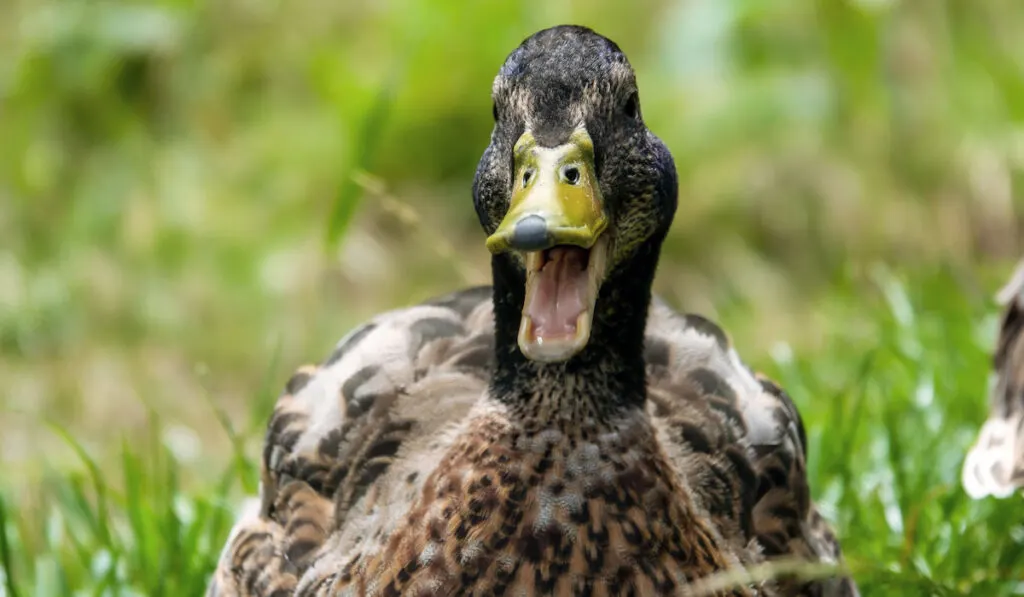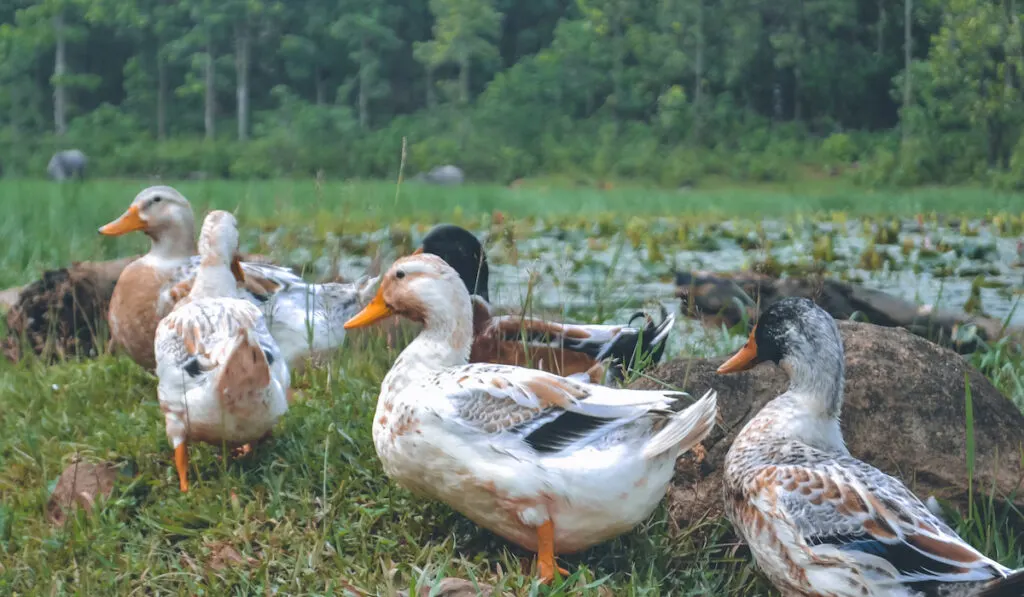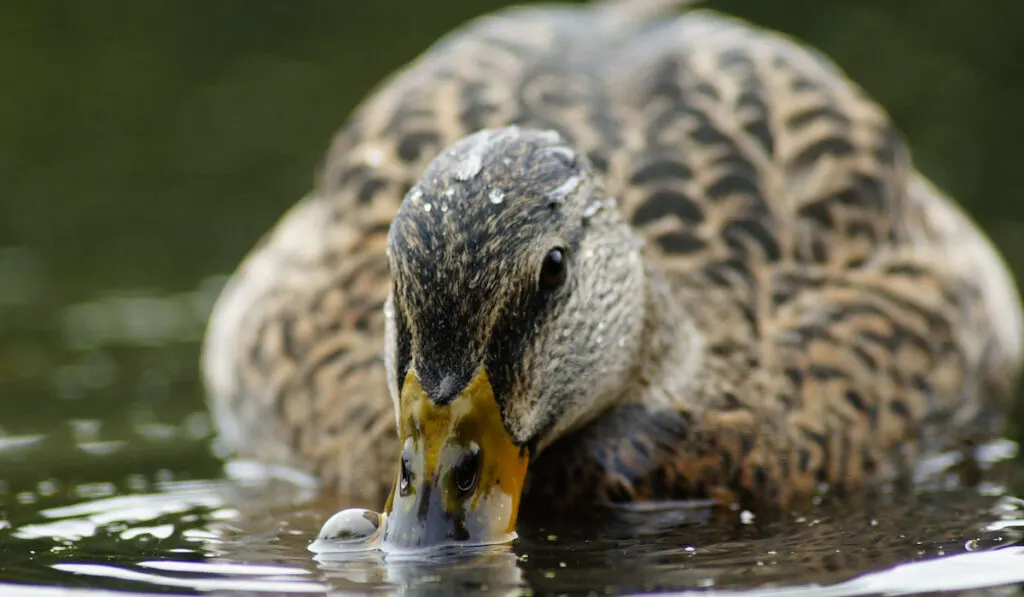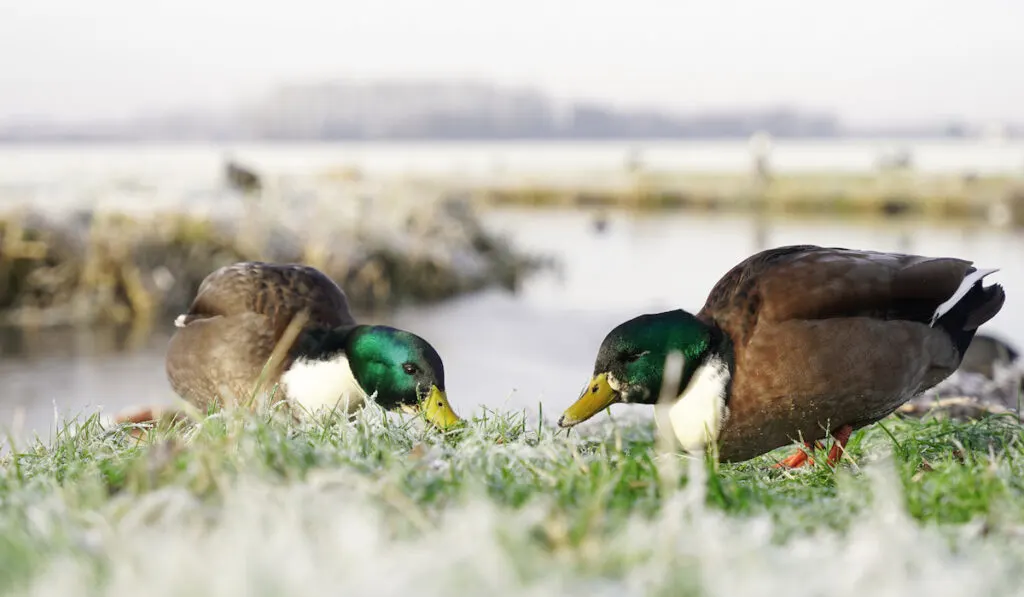Ducks are fascinating birds to rear. Whether you are starting or you are a seasoned farmer, understanding duck behavior is crucial.
Like human beings, your flock deserves happiness, health, and safety. But you can only offer these things when you understand their behavior.
When I started my duck-rearing journey two years ago, interpreting their behavior was challenging. I often mistook noise from their yard for discomfort when they were happy.
This article is for you if you have problems understanding these feathered friends in your backyard.
We have compiled a guide to help you understand your flock’s actions and vocalization.
Explore the ducks’ body language, wading behavior, sounds, and how to interpret them.

Table of Contents
Understanding Duck Communication
Ducks make different sounds to communicate. The most common sound is quacking, although they also make other sounds.
Here are familiar duck sounds and what they mean.
1. Quack Sounds
The quack sound is common among hens. If you see a female duck quacking, they are warning other females against courting their ‘partner.’ A mother also makes this sound to warn her chicks from wandering too far from her watch.
2. Whistle
Ducks whistle in the morning to show enthusiasm and positive energy to start the day.
3. Squeak
A duck squeaks to communicate to others about impending danger. For example, when one spots a predator, it makes this sound to alert others to run for safety.

4. Grunt
Male ducks make grunt sounds during and after mating. Grunt sounds are common among ducks at night, but sometimes you may hear them during the day.
A male duck can also grunt to invite other males to join him in courting a female.
5. Groan
Ducks groan when angry, frustrated, or stressed. Like humans, a groan from your ducks should alert you of something negative occurring to your flock.
6. Sigh
A sigh in ducks is a sign of relief. Although this sound is uncommon, ducks make it when they are safe from danger.
You will hear a hen sigh after saving its chicks from predators or other dangers. It is a way of expressing emotions similar to humans.

7. Bark
Barking in ducks bears a similar meaning to that of dogs. If you hear your fowls barking, they are alerting you of impending danger, such as predatory attacks.
8. Purr
Ducks purr to express happiness and contentment. If you rear ducks as pets and observe them making purr sounds while handling them, then they are happy.
9. Croak
Croaking is common in females when they are frightened. A mother croaks to warn her chicks of danger.
They also make a soft shrill call to ducklings when they see an enemy.
10. Growl
Ducks growl and whine to show discontentment. Although growling sounds are not loud, you can hear them when handling them or when they are nearby.
Examine your bird’s coop and its surroundings when they growl. Something is probably causing them discomfort.

Importance of Body Language in Duck Communication
Body language is the primary means of communication in ducks. They use body movements and sounds to communicate among themselves and with humans.
Understanding your ducks’ body language is crucial. In addition to helping you understand their behavior, you can handle them better when you get the message they are passing across.
This can improve your husbandry skills and create a stronger bond between you and your fowls for better productivity.
Examples of Common Duck Behaviors and Their Meanings
Ducks portray different behaviors to communicate. Here are some of them and what they mean.
1. Wagging Tail Feathers

Ducks wag their tail feathers to express excitement. This can be after you give them a treat, feed them their favorite meal, or allow them to forage and enjoy the grass and insect diet.
However, you should differentiate between the shaking of feathers after swimming and tail wagging.
2. Tilting the Head
When your ducks tilt their heads while their eyes remain in a fixed position, they are scanning different horizons. They do this to search for food or determine if predators are around.
3. Blowing Bubbles

Bubble-blowing is the duck’s way of grooming. They show this behavior when swimming.
When they dip their heads in the water and exhale, bubbles appear. And if you think they are doing this for fun, you are wrong.
Ducks blow bubbles to remove mud, food remains, and feathers from their nostrils.
4. Bobbing their Head Side to Side
Ducks are social birds who often express emotions. When a duck bobs its head side to side, it’s unhappy.
Female leaders often show this behavior to warn other females from her drake. Hens also bob their heads side to side to warn ducklings against roaming away from the mother’s watch.
5. Hole Digging
Ducks rarely dig holes except when they are in a muddy area. If you see them scooping muddy soil, they are likely looking for food.
6. Preening

Ducks love preening after leaving the pond or swimming pool. They preen for about 15 minutes to distribute the oil in their feathers through the body.
The oil helps keep their feathers dry and waterproof. The preening gland at the tail base secretes oil after stimulation from the preening act.
This preening oil helps shake off water from the duck’s skin.
Navigating Social Dynamics in a Duck Flock
Ducks perform different activities in specific patterns and order. This helps to minimize conflict among them and offers the flock leaders respect.
Pecking Order and Hierarchy Among Ducks

Every flock establishes a pecking order. However, the pecking order in ducks is not as organized as that of chickens.
Female ducks are the ones that often establish a pecking order, especially when laying eggs. The hens stand on each other, and the one on top lays its eggs first.
When the first duck finishes laying eggs, it can stand in place as the others follow the trend until they all finish laying. There are two reasons for this behavior among females.
- The female lead does this to exert dominance
- All the hens stand on each other to protect their eggs.
Drakes also have a pecking order, especially when mating. The lead mates first as the others wait to mate later.
They also have a social hierarchy when feeding. The highest-ranking eat first, while the lower ones eat later. However, the birds are organized, and the dominant ones leave food for those lower in rank.
Ducks use body posture to gauge who should rank higher. Their ranking enhances governance as the higher guard their territory while the lower ones remain submissive.
The male and female leads use sound and body gestures to warn other ducks when they trespass into their territory or in case of danger.
How Ducks Establish and Maintain Social Bonds

Ducks establish social bonds right after hatching. Ducklings and mature birds develop social bonds in the following ways.
- Imprinting. Young ducklings establish a bond with whoever they spend time with after hatching. The mother is often their closest ‘friend’ followed by siblings.
If you use an incubator, the chicks will imprint on you because you will handle and feed them.
As they grow, the ducks will follow you once they imprint on you. This is the first and strongest bond in ducks.
- Flirting and courting. Ducks are flirty, especially when in water. The males rise out of the water shaking their tails and heads.
They also play nip while swimming around with their heads stretched.
Conversely, the females bob their heads up and down while flattening their bodies on the water’s surface in a mating pose.
Females flirt around the males they are interested in and tend to protect their territory against others.
Signs of Aggression and How to Address It

Ducks display aggression, especially when they feel threatened. You can tell if a duck is aggressive through
- Breed. Some breeds, like the Muscovy duck, are naturally more aggressive.
- Pecking or biting. A duck will try to peck or bite you or others when it feels threatened.
- Hissing. If you hear a duck hissing, then it is not feeling friendly with you.
So, what should you do when your birds become aggressive? The root cause of aggression is a lack of socialization and discontentment.
The following practices can minimize aggressiveness in ducks.
- Allow them to socialize and interact with other ducks
- Have the right drake-to-hen ratio. Hens are possessive and protective of their drakes. They tend to fight other females coming near their ‘partner.’
Drakes, on the other hand, may fight for dominance if the hens are too few. Therefore, ensure the right drake-to-hen ratio to avoid fights
- Separate drakes from hens if the drakes become too rough. You will help reduce stress in hens by keeping drakes away.
- Provide a mating pond. Your ducks need a pond to glory and mate in. They are less aggressive while in the water.
- Create separate coops for males and females with enough space. This prevents competition for partners and reduces aggressiveness.
- Acquire first aid supplies. You may not be around when your fowls become aggressive and injure others. Having first aid supplies like water, a pair of scissors and bandages can help you clean wounds and dress them in time.
Exploring Duck Habits and Routines
Ducks perform different activities throughout the day. They are more active at dawn and before dusk.
Daily Habits and Routines of Ducks

During the day, you will find these waterfowl loafing, preening, and sleeping. They select loafing and roosting sites depending on the prevailing weather.
On sunny days, ducks loaf in open areas to warm themselves while performing comfort movements like stretching.
They feed almost all the time when food is available. At night, ducks migrate as they seek comfortable habitats to keep warm.
The daily routine of a duck is centered around eating and resting. While performing the two activities, they also socialize and groom.
How Ducks Adapt to Different Environments and Situations

Ducks are waterfowl and spend time in water and on land. They are adapted to these environments in the following ways.
- Webbed feet help them move in water efficiently without drowning.
- Oily feathers repel water and keep their bodies warm even when submerged in water.
- Wide beaks enable them to sift small animals from water for food.
- Ducks that live in food-scarce areas, like Harlequins, leave their nests earlier than others to reduce competition for food.
- Mallard ducks pretend to be injured when they see predators. This fools the predator into following the mother, hence protecting the ducklings.
Addressing Common Behavior Problems in Ducks
Ducks portray behavioral problems like other birds. The table below summarizes common problems and how to address them.
| Behavioral Problem | Causes | What to Do |
| Poor egg production and nesting | Poor nutrition Cold weather | Provide enough food and a warm nesting area during cold weather. |
| Feather picking and self-mutilation | Stress Lack of socializing time Sexual frustration Parasite infestation | Feed and inspect your ducks regularly Allow for socialization Keep their habitat clean and parasite-free |
| Overeating and other health-related behaviors | Giving ducks a lot of bread and refined food | Minimize fatty snacks and bread, give your ducks more grains, and allow them to forage |
| Abnormal Vocalizations | Infections Presence of predators | Examine your bird for possible diseases, and infections, and ensure they are safe from predators |
| Stereotypic Behavior (Some ducks may develop repetitive behaviors, such as pacing or circling, due to stress, boredom, or lack of space.) | Too much confinement Minimal interaction between drakes and hens Congestion | Allow your ducks enough run time to forage, flirt, and swim Ensure they have enough coop space |

Conclusion
Ducks are interesting creatures to spend time with. They like expressing their emotions to humans and their fellow birds.
Although their quacking and body language can be difficult to decipher for beginners, you understand them more as you handle them.
If you observe any body movement or sound, whether in water or on land, check out what is happening.
Note that ducklings make softer sounds than mature ducks. Therefore, keep a close eye on them. They are more vulnerable.
Understanding duck language is the best way to improve your husbandry practices and rear a happy flock in your backyard.
Resources
- https://www.thehappychickencoop.com/interpreting-duck-behavior/
- https://outforia.com/how-do-ducks-mate/
- https://petkeen.com/do-ducks-purr/
- https://www.nycgovparks.org/parks/central-park/dailyplant/17695
- https://farmfromhome.com/why-ducks-get-noisy-and-what-to-do/
- https://www.omlet.co.uk/guide/ducks/about_ducks/pecking_order/
- https://www.thehappychickencoop.com/15-ways-to-deal-with-aggressive-ducks/
- https://www.ducks.org/conservation/waterfowl-research-science/ducks-after-dark
